
 |
Freethought & Rationalism ArchiveThe archives are read only. |
|
|
#141 |
|
Veteran Member
Join Date: Jun 2010
Location: seattle, wa
Posts: 9,337
|
It's amazing to see how many 'average' Muslims take the idea that Jesus was not crucified and Judas was put in his place as the very word of the gospel. There numbers are probably as great or greater than those who believe Jesus was actually crucified. I can still remember sitting in the seats of the San Diego Safari Park talking to a Kenyan about this. He 'knew' that Judas was crucified on the cross because 'the gospel' told him so.
|
|
|
|
|
#142 |
|
Veteran Member
Join Date: Jun 2010
Location: seattle, wa
Posts: 9,337
|
Here are some earlier examples in Islamic literature. http://books.google.com/books?id=ht1...ied&f=falseThe understanding is clearly pre-Islamic. Notice how the idea of the 'semblance' is so important here.
Basilides apparently thought that Simon was crucified in Jesus place. There is also a similar story in the Clementine Literature about the 'semblance' of Simon changing the appearance of believers in Simon into Simon Magus. |
|
|
|
|
#143 | ||
|
Contributor
Join Date: Mar 2002
Location: nowhere
Posts: 15,747
|
Quote:
Reread this: Quote:
|
||
|
|
|
|
#144 |
|
Veteran Member
Join Date: Jun 2010
Location: seattle, wa
Posts: 9,337
|
Indeed, the question for me has always been why would the Islamic tradition need to invent a tradition of substitution? It can't be owing to some 'plot' to subvert Christianity. The ideas are already lurking in the Quran and clearly go back to the tradition of Basilides and what is mentioned about Judas in Irenaeus. The substitution tradition is certainly pre-Islamic.
|
|
|
|
|
#145 | |
|
Veteran Member
Join Date: Jun 2010
Location: seattle, wa
Posts: 9,337
|
Hey everyone. I think I have solved the mystery of Clement's reference to 'three hundred' being 'the Lord's sign.' Just to recap, while the Epistle to Barnabas says something about the Tau in 318 symbolizing the cross. Yet I noticed that Clement never says anything about the Tau being the cross. Rather Clement thinks that 'three hundred' (T = 300) representing 'the Lord's sign.' While most scholars simply brush the non-existent reference to the Cross aside thinking that 'he must mean the same thing.' Yet I noticed that Origen also refrains from referencing the cross and throws out the same numerical formulas.
Well guess what. Origen and Clement's analysis goes back to Philo not the cross. Philo says that the number 300 symbolizes the 'perfect man': Quote:
|
|
|
|
|
|
#146 | |
|
Veteran Member
Join Date: Jan 2007
Location: Mondcivitan Republic
Posts: 2,550
|
As I am currently reforrmatting Crombie's ET of Origen's Against Celsus in order to make it easier to digest (Crombie's version is a wee tad too Victorian for my taste), might I correct you as to the number of books he wrote against Celsus? There are eight books.
FWIW, Celsus argues that IF a divine being had descended to earth, it would not take on a physical body like Jesus' is described to have possessed (eats, drinks, can be touched). Origen makes an extensive effort to refute this kind of idea. To me, Origen's insistence that Christ possessed of a real body is effectively an endorsement that he was a real person. I'm just saying, that is what Origen thinks, not necessarily what is true. DCH PS: How can anyone really read Crombie's translation in Ante Nicene Fathers, volume 4? The language is all Elizabethian, which makes wading through it like watching all 36 episodes of the HBO series "Deadwood". It takes up about 265 extremely dense pages in the printed ANF volume, all without even paragraph markers, and it doesn't help that each chapter does not always coincide with the points being made. Now I have already reformatted this to 370 pages by separating each sentence, color coding quoted/summarized text (red = Celsus directly, black underline = Origen's summaries of parts of Celsus' book, green = OT, blue = NT, purple = pagan writers like Plato, Homer, Herodotus, etc), and separating the quotes and descriptions from the refutations by offsetting the latter one step to the right. I am currently adding the sources of the citations to the reformatted text (putting them in brackets immediately after the color coded quotes/summaries, rather than footnotes/endnotes. What a laborious task, but I think it will be worth it! There does not appear to be ANY other English Translations in the Public Domain, and not even a good analysis of the contents as far as I can tell (except maybe in Latin). Considering I have probably made about 20 passes through the book in the process described above, I am learning quite a bit about Celsus, Origen, how Greek philosophy was understood, and how the early church in Alexendria operated and taught. Still, I have not attempted any serious study of it ... yet! Bwahahahaa :angry: Quote:
|
|
|
|
|
|
#147 | |
|
Veteran Member
Join Date: Sep 2004
Location: Birmingham UK
Posts: 4,876
|
Quote:
Andrew Criddle |
|
|
|
|
|
#148 | ||
|
Veteran Member
Join Date: Jan 2007
Location: Mondcivitan Republic
Posts: 2,550
|
Looks to me like the Monster seen in Flatwoods, West Virginia, USA in 1952. Except for the "dress" on the monster, both figures appear to be floating, holding their arms out, have three fingers, and have the weird helmet or hat. Perhaps a Vorlon "encounter suit" from the Babylon 5 TV series.
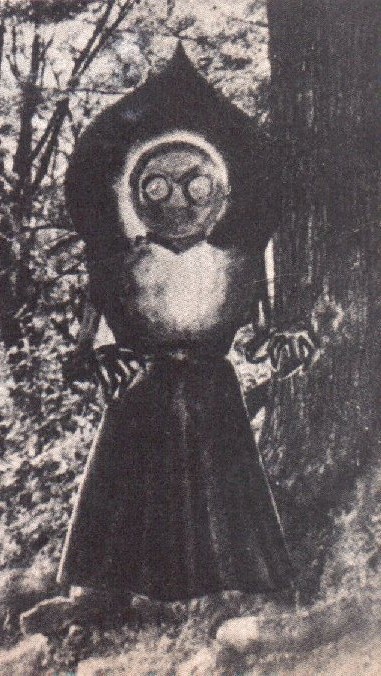 The Blog entry that this picture came from (here) illustrates how an artifact depicting events (in this case the interviews with the witnesses and thepress follow-up immediately after the events) can be twisted around to satisfy ideological presuppositions, in this case those of academics. Seriously though, this could be nothing more than a crudely impressed depiction of a gladiator in mid-leap, with the figure to the left running away and a spectator to the right clapping in applause (Stephan would say looking at the man's round buttocks). In other words, you have there a magical amulet depicting victory over one's adversaries, with the accompanying 'spell.' I really don't see where it says anything like "Jesus M(essias)." DCH Quote:
|
||
|
|
|
|
#149 | |||
|
Regular Member
Join Date: Dec 2011
Location: The only Carribean port not in the Tropics.
Posts: 359
|
Quote:
A gladiator taking a leap and frightening the spectators certainly would explain everything. Except (maybe) for the absolute nudity of the gladiator. And what appears to be a nimbus around his head, representing the rays of the sun. And a mid-Byzantine date (500, 600 or later CE) would not explain the nakedness of the subject either. Nor would it explain his contorted body with the arms spread out, the torso thrust forward and the feet slightly apart like one whose heels were nailed to the sides of the post. Orthodox Christians did NOT portray Christ like that. 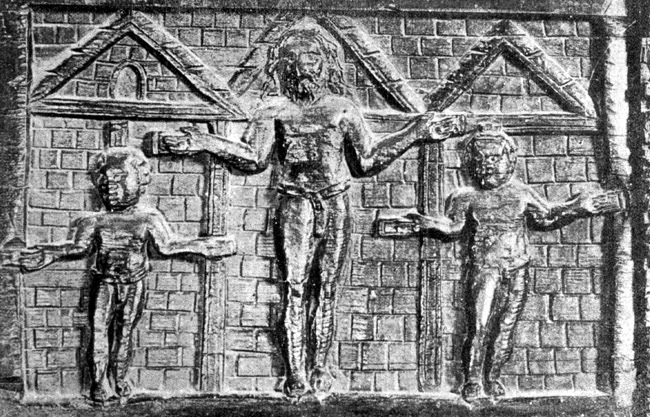 Sta Sabina's Chapel, Ravenna, Italy, ca. 430 CE 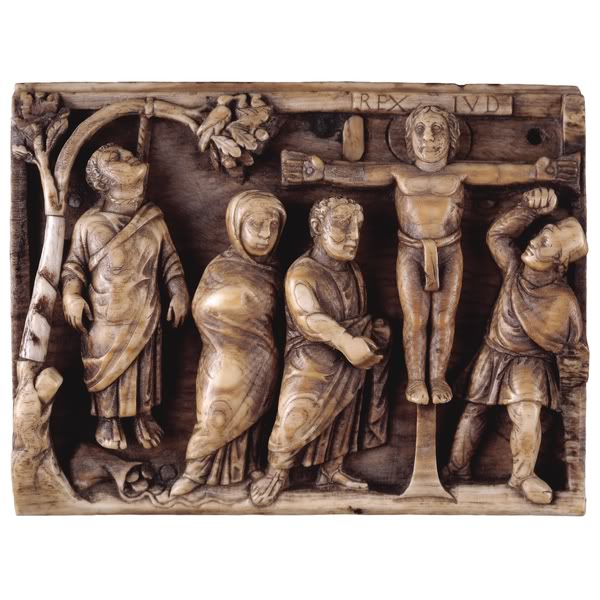 Ivory Sarcaphagus, British Museum, ca. 450 CE  Reliquarium, Lateran Crucifixion, ca. 600 CE 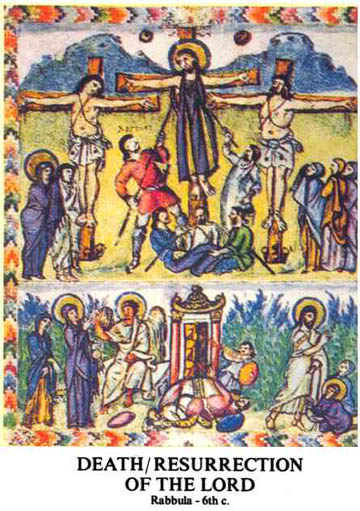 Crucifixion, Rabbula, ca. 6th C. CE Crucifixion, Rabbula, ca. 6th C. CE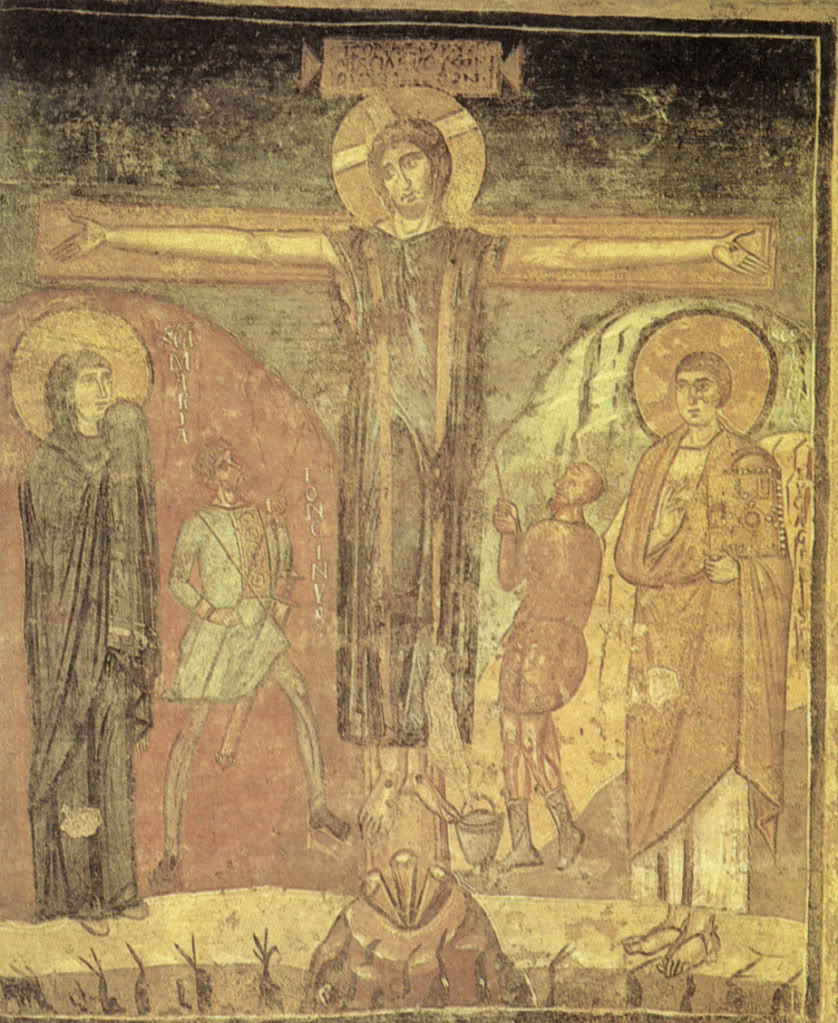 Santa Maria, Antiqua Roma, Crocifissione Fresco, ca. 741-52 CE  Meister des Kroenungsakramentars ca. 950-1000 CE 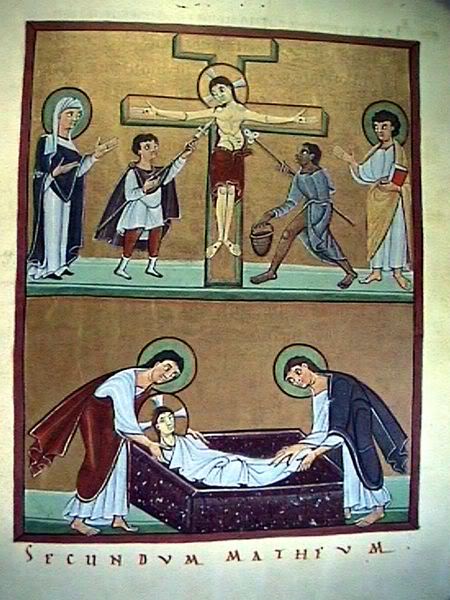 Bamberg Apocalypse Crucifixion / Entombment, Early Medieval period. My conclusion is that this could only have been created by someone with some kind of knowledge of how the Romans crucified. And its creator could have been mocking Constantine's "pets," the Orthodox. I know this flies in the face of scholarly consensus, but in my opinion, if this is not an Early Byzantine or even Late Antique gem, then it is a fake. |
|||
|
|
|
|
#150 | ||||
|
Regular Member
Join Date: Dec 2011
Location: The only Carribean port not in the Tropics.
Posts: 359
|
Quote:
Quote:
Quote:
|
||||
|
|
| Thread Tools | Search this Thread |
|